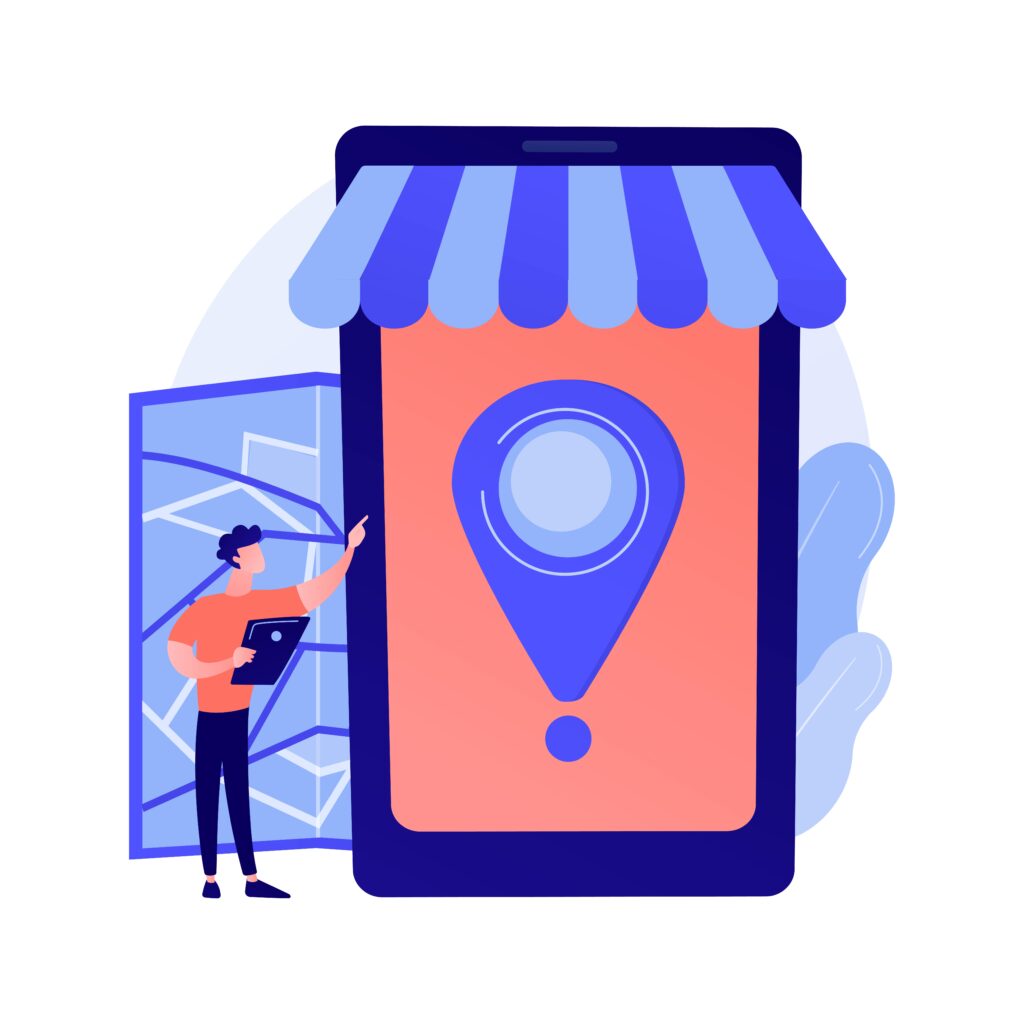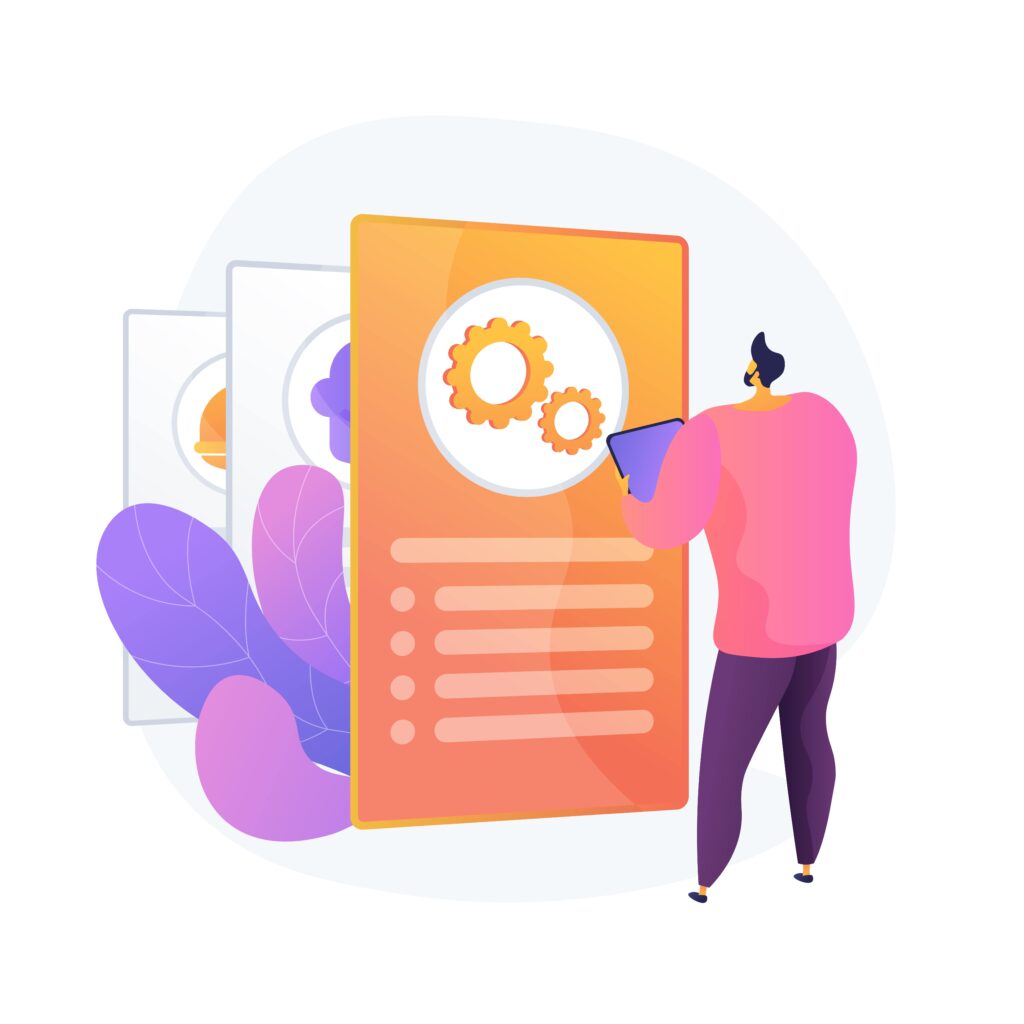When you browse through a B2C (Business-to-Consumer) website, every click, scroll, and selection you make is often tracked. This tracking is vital for businesses as it helps them understand customer behavior, improve user experience, and optimize sales strategies.
But the question arises “What does a b2c website use to track the items you select on the website?” The answer is The two primary tools they use are tracking pixels and cookies.

In this post, we cover...
ToggleWhat does a b2c website use to track the items you select on the website?
To track the items you select on the website, B2C websites use either tracking pixels or cookies.
What is a B2C Website?
B2C websites are platforms where businesses sell products or services directly to consumers. Examples include popular online retailers like Amazon, eBay, and Walmart.
These websites are designed to provide an intuitive and engaging user experience, making it easy for consumers to find, select, and purchase products. User experience is a top priority for B2C websites, as it directly impacts customer satisfaction and conversion rates.
Why Do B2C Websites Track User Activity?
Tracking user activity on B2C websites is essential for several reasons:
- Enhancing User Experience: By tracking what you select or view, websites can tailor the experience to your preferences, showing you relevant products and recommendations.
- Personalization of Content and Offers: Tracking helps websites offer personalized deals and content based on your browsing history.
- Analyzing Consumer Behavior: Understanding how users interact with the website allows businesses to optimize their platform, making it more user-friendly and efficient.
Importance of Tracking in B2C Websites
Why do B2C websites care so much about tracking your actions? The answer is simple: data. Tracking allows these businesses to gather data on what products they’re interested in, how they navigate through their site, and what influences their purchasing decisions.
This data is gold for B2C websites, helping them personalize your experience, recommend products, and even tailor ads that might interest you.
Understanding Tracking Technologies
Before we get into which technology is better for tracking—tracking pixels or cookies—it’s important to understand what these technologies are and how they work.
What are Tracking Pixels?
Tracking pixels are tiny, often invisible images embedded in web pages or emails. Despite their size, they play a big role in monitoring your online activity.
What Are Tracking Pixels?
A tracking pixel, also known as a web beacon, is a 1×1 pixel image that is placed on a webpage or email. When you visit the page or open the email, the pixel loads from the server, recording that action.
How Do Tracking Pixels Work?
When a tracking pixel is loaded, it sends information back to a server. This data can include details like your IP address, the type of device you’re using, and your activity on the site. Because they are so small and often invisible, tracking pixels are an unobtrusive way to collect data.
What Are Cookies?
Cookies are perhaps the most well-known tracking method, but there’s a lot more to them than meets the eye.
Definition of Cookies
Cookies are small text files stored on your device by the website you visit. These files contain data specific to your interactions with the website, such as your login status, items in your cart, or language preferences.
How Do Cookies Function?
When you visit a website, the server sends a cookie to your device. This cookie is stored in your browser and sent back to the server every time you make a request (like clicking on a link or loading a new page). This allows the website to remember your actions and preferences over time.
Comparing Tracking Pixels and Cookies
So, now that we know what tracking pixels and cookies are, how do they stack up against each other?

Differences Between Tracking Pixels and Cookies
The main difference lies in how they store and transmit data. Tracking pixels collect data as soon as they are loaded and send it directly to the server without storing anything on your device. On the other hand, cookies store data locally on your device and are sent back to the server with each interaction.
Similarities Between Tracking Pixels and Cookies
Despite their differences, both tracking pixels and cookies are used to monitor user behavior on websites. They both provide valuable data that helps businesses understand user interactions, personalize content, and track the effectiveness of marketing campaigns.
While both tracking pixels and cookies are used to monitor user behavior, they serve different purposes and have distinct functionalities.
Data Collection Method
- Tracking Pixels: These are primarily used for gathering data related to user interaction, such as whether a user has viewed a particular email or webpage.
- Cookies: Cookies store information directly on the user’s device, making it accessible for future visits to the website.
User Experience Impact
- Tracking Pixels: Since they are invisible and don’t store data on the user’s device, tracking pixels have minimal impact on user experience.
- Cookies: Cookies can enhance user experience by remembering login details, preferences, and shopping cart items, but they can also slow down the browser if too many are stored.
To increase Traffic in your website you can read this article
Why B2C Websites Use These Tools
B2C websites use tracking pixels and cookies to enhance their understanding of customer behavior. By analyzing the data collected, they can:
- Personalize Content: Based on previous interactions, websites can tailor content to match user preferences.
- Optimize Marketing Campaigns: Marketers can gauge the effectiveness of their campaigns by seeing which ads were viewed and clicked on.
- Improve User Experience: By remembering preferences and past actions, websites can offer a more seamless and efficient browsing experience.
Are Cookies Safe?
Safety is a common concern when it comes to cookies:
- Security Aspects of Using Cookies: Generally, cookies are safe as long as the website uses them responsibly. They don’t carry viruses or malware.
- Risks Associated with Cookies: However, cookies can pose privacy risks if used to track users across multiple sites without consent.
- Best Practices for Ensuring Safe Use of Cookies: Websites should be transparent about their use of cookies and provide clear options for users to opt in or out.
Use Cases in B2C Websites
Enhance customer engagement by offering personalized product recommendations based on browsing history and preferences.

E-commerce Platforms
Cookies and tracking pixels play a crucial role in e-commerce by remembering user selections, saving shopping cart items, and providing personalized recommendations.
Personalization and User Experience
Tracking technologies enable websites to offer personalized content and advertisements, enhancing the overall user experience and engagement.
Analytics and Performance Monitoring
Businesses rely on cookies and pixels to monitor website performance, track conversions, and gather insights into user behavior, helping them make data-driven decisions.
Privacy Concerns and Regulations
GDPR and CCPA Overview
With the rise of data privacy concerns, regulations like the General Data Protection Regulation (GDPR) and the California Consumer Privacy Act (CCPA) have been implemented to protect user data and ensure transparency in tracking practices.
Impact of Regulations on Tracking
These regulations require businesses to obtain user consent before using cookies or tracking pixels, significantly impacting how companies can collect and use data.
User Consent and Transparency
To comply with these regulations, websites must implement clear and accessible consent mechanisms, allowing users to opt in or out of tracking.
Best Practices for Using Cookies and Pixels
Balancing Tracking and Privacy
Businesses must strike a balance between effective tracking and respecting user privacy, ensuring that their practices align with legal requirements and user expectations.
Implementing Secure and Ethical Tracking
It’s essential to use secure methods for storing and transmitting tracking data, avoiding practices that could be perceived as invasive or unethical.
Tools and Technologies for Compliance
Various tools and technologies, such as consent management platforms and privacy-focused analytics, can help businesses comply with regulations while still gathering valuable insights.
Case Studies
Example 1: E-commerce Site Using Cookies
An e-commerce platform uses cookies to track user preferences, enabling personalized product recommendations and a seamless shopping experience.
Example 2: Social Media Platform Using Pixels
A social media platform leverages tracking pixels to measure ad performance and retarget users who have previously engaged with their content.
Future Trends in Website Tracking
Emerging Technologies
As technology evolves, new methods of tracking, such as browser fingerprinting and AI-driven analytics, are emerging, offering more sophisticated ways to understand user behavior.
The Role of AI and Machine Learning
AI and machine learning are increasingly being integrated into tracking technologies, enabling more accurate predictions and personalized experiences.
Potential Challenges and Opportunities
While these advancements offer exciting possibilities, they also present challenges, particularly in terms of privacy and ethical considerations.
How to Opt Out of Cookies?
If you’re concerned about privacy, you may want to opt out of cookies:
- Methods to Disable Cookies: Most browsers allow you to disable cookies through their settings. This can prevent websites from tracking your activity.
- Impact of Opting Out on User Experience: Disabling cookies may affect your browsing experience, making it less personalized and potentially more cumbersome.
- Alternative Tracking Methods: Websites may use alternative methods like fingerprinting, but these are generally less common and more intrusive.
Conclusion
In the debate between Pexels and cookies for tracking user activity on B2C websites, cookies are the undeniable champion. They play a pivotal role in enhancing user experience, personalizing content, and driving marketing strategies. While Pexels is an excellent tool for sourcing visuals, it simply doesn’t have the capabilities required for tracking.
As technology continues to evolve, cookies may one day be replaced, but for now, they remain the backbone of user tracking in e-commerce. So, I hope I have cleared your doubt about What does a b2c website use to track the items you select on the website? thank you for reading and keep visiting us.
How can my business benefit from using cookies and tracking pixels?
By utilizing cookies and tracking pixels, your business can gather valuable data on user behavior, allowing you to personalize user experiences, improve customer retention, and optimize marketing campaigns.
These tools enable better targeting, which can lead to higher conversion rates and more effective resource allocation.
What are the legal implications of using cookies and tracking pixels on my website?
The use of cookies and tracking pixels must comply with privacy regulations such as the GDPR and CCPA.
This includes obtaining user consent, providing transparency about data collection practices, and ensuring that user data is securely handled. Non-compliance can result in hefty fines and damage to your business’s reputation.
How can I ensure my website’s tracking methods align with user privacy concerns?
To align with privacy concerns, implement clear consent mechanisms, such as cookie banners that allow users to opt in or out of tracking. Additionally, regularly update your privacy policy to reflect your tracking practices and use anonymized data where possible to minimize privacy risks.
Should my business use both cookies and tracking pixels, or is one method sufficient?
The choice between using cookies, tracking pixels, or both depends on your business goals. Cookies are ideal for persistent user tracking and personalized experiences, while tracking pixels are better for real-time analytics and retargeting.
Combining both can provide a comprehensive tracking strategy that addresses various business needs.
How can tracking data improve my business’s marketing efforts?
Tracking data allows your business to segment audiences, tailor marketing messages, and retarget users who have shown interest in your products or services.
By analyzing this data, you can identify trends, optimize ad spend, and increase the ROI of your marketing campaigns through more precise targeting.
What are the alternatives to cookies for tracking?
Alternatives include server-side tracking, first-party data, and newer technologies like AI-driven analytics.
Can I browse a B2C website without enabling cookies?
Yes, but your experience might be less personalized, and certain features may not work as intended.
What are the main differences between tracking pixels and cookies?
Tracking pixels collect data in real-time without storing anything on your device, while cookies store data locally and transmit it back to the server during interactions.
Can I block tracking pixels and cookies on a B2C website?
Yes, you can block tracking pixels and cookies by adjusting your browser settings or using privacy-focused extensions.
How do cookies enhance my shopping experience on B2C websites?
Cookies help by remembering your preferences, keeping items in your cart, and maintaining your login status, leading to a more personalized experience.
Are tracking pixels or cookies more intrusive to my privacy?
Both can be intrusive, but tracking pixels often operate without your knowledge, making them potentially more invasive.
What should I look for in a website’s privacy policy regarding tracking?
Look for clear information on how the website uses tracking technologies, whether they seek your consent, and how they protect your data.




One Response